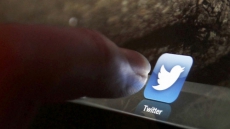Batten down the hatches. It's that time of year when boxelder bugs are snooping around looking for a winter home. Your home and mine, that is.
You know these bugs. They are about a half-inch long and charcoal grey, with three red stripes on their thorax and red veins on their wings. Viewed objectively, they might be pretty as individuals or clustered on the south wall of your home some warm fall or winter day. But viewed subjectively? Yuck.
Boxelder bugs are "true bugs." That is, they are in the insect order known as Hemiptera, commonly known as true bugs, a group to which flies, bees, mosquitoes and aphids do not belong. Some identifying characteristics of true bugs are two sets of wings, the rear ones shorter than the front ones, wings at rest held flat on their backs, sucking mouthparts and a beak at the front of the head.
Another characteristic of many true bugs is their scent, which is bad. As a gardener you may have experienced this scent from another true bug, the squash bug. Stink bugs also are true bugs. Boxelder bugs are actually among the scentless true bugs.
ALL THEY WANT IS SOMEWHERE COZY
In their search for a cozy, dry spot in which to spend the winter, boxelder females will sneak into cracks in a home's foundation and around windows and doors, even gaps beneath siding. From there, some might accidentally find their way inside.
Come spring, the females will be out and about, eager to lay eggs. The eggs hatch into bright red nymphs who resemble their mothers, except they have small or no wings. The nymphs go through a series of molts to reach adult size, each time shedding their old, undersize skeletons, climaxing in the emergence of the fully developed adult in July. Given enough time, the cycle from egg to adult might be completed again before winter sets in.
NO THREAT TO PLANTS
While the insects are growing, they are, of course, eating, and their food of choice is their namesake, boxelder. The tree, like the insect, is ubiquitous over much of the country.
The bugs will eat boxelder flowers, fruits, leaves and small twigs. They actually do little harm to boxelder trees, which many people consider little more than weeds — weak-wooded trees with muddy yellow leaves in autumn.
If pressed by hunger, the bugs also will feed on ash trees, other maple species (boxelder is a species of maple) and fruit trees.
Boxelder bugs also do little harm if they get in your house. They might take an occasional taste of some houseplant, but they don't eat clothing or food.
The worst that can be said of them is they're a nuisance, perhaps enough so to warrant some human intervention. This does not mean dousing them with pesticide, although oil, insecticidal soap, and pyrethrum or rotenone are allegedly up to the task. Within walls, silica aerogels, such as Drione, kill the bugs by absorbing their waxy coating and causing dehydration.
A better approach, besides just ignoring the bugs, is to avoid the problem in the first place. Prevent their entry by caulking openings in your home's foundation and around windows and doors, and screen vents, such as the one from a clothes dryer. (All this has the added benefit of making your home more energy-efficient.)
Finally, cut down boxelder trees near your home, especially the female ones whose flowers are a particular delicacy to boxelder bugs. I cut down a large boxelder near the south side of my home and the boxelder bug problem is no more.
Not so for Asian multicolored lady beetles, which also seek shelter in fall and inadvertently wander indoors — but that's another story.





